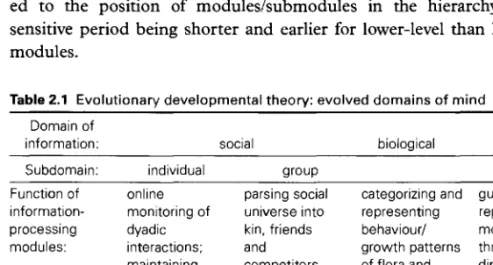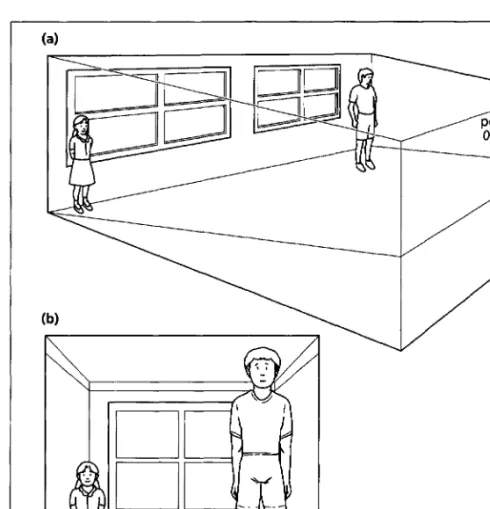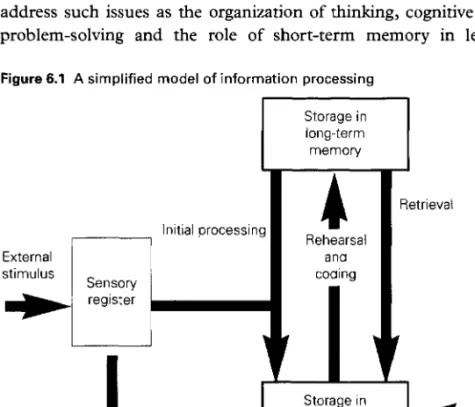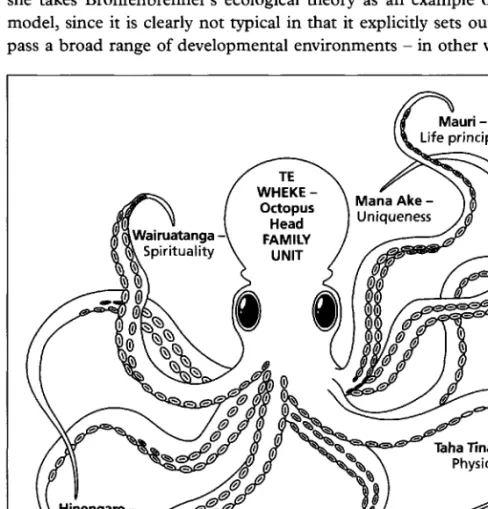Other texts are also available that provide detailed explanations of many classic theories of child development. We also thank Wilhelmina Drummond for permission to use her illustration of the Maori model of human development (Figure 9.1).
Introduction
Developmental psychology
Currently, psychologists are being challenged to consider whether theoretical diversity or integration is the way of the future. In each of the chapters we encourage readers to return to these questions as a way to review the nature of the theories presented and to use the discussion questions, activities, and websites listed in Appendix 2 to facilitate this reflection.
Why study child development?
By observing the development of the infant, Darwin believed that some understanding of the species itself could be gained. A wave of interest in the study of children, along with the study of so-called 'primitives', emerged as the perceived key to a better understanding of the development of 'normal' behaviour.
Factors shaping views of development
Some foundations for understanding the contemporary status of children in Western societies are found in the writings of the Greek philosopher Aristotle. Recently, the field of developmental psychology has contributed to the recognition of divisions in the very concept of childhood.
What is a theory?
While the empirical method avoids interpretation, early twentieth-century psychology struggled with the method of 'Verstehen', or understanding, as a method. The push for this comes from the contributions that postmodern and feminist thought are making to the field, along with a reassessment of the role of philosophy.
Evaluating theories
This core is surrounded by a "protective girdle" of intermediate-level theories and auxiliary hypotheses that give rise to specific, testable statements. Rather than experimental results leading to all-or-nothing acceptance or rejection of the fundamental metatheory, they contribute to the evaluation of the functioning of the protective belt - to a decision about whether metatheory is generally progressive or degenerative is.
How do children change as they develop?
Moreover, the use of the concept of stages varies from psychological theory to psychological theory. Meadows notes that the use of the term 'stage' in relation to other psychological theories is more specific.
Metaphors and theoretical orientations
In addition, dialectical theories (such as Vygotsky's) can be understood to belong to the organismic tradition, although they can also be seen as a bridge between mechanistic and organismic theories, with organism and environment in mutually influencing interaction. Dixon and Lerner (1992) identified evolutionary theory, particularly Darwinian theory, as playing a key role in the five metatheoretical traditions they identified (organism, mechanism, contextualism, psychodynamic, and dialectical).
A postmodern view of knowledge and children
Contributing to the idea of a 'fractured identity' is the interdisciplinary nature of much research today, which seeks a greater comparative understanding of the world. Instead, in the face of globalization, and the decline of the nation-state, the role of the universities in relation to the production of knowledge is now a matter for redefinition and debate.
Conclusions
Finally, Tierney suggested that what we have witnessed in the second half of the twentieth century is the death of the "nation-state", in which the university is no longer seen as the sole arbiter, producer and transmitter of knowledge. We would suggest that this child be understood in a philosophical, historical and cultural context; one valued for its own sake and not merely as a means of understanding the adult condition; one that the researcher seeks to understand without exploitation and that the practitioner seeks to assist in fully understanding the social and historical contexts in which the child, the practitioner, and other relevant parties operate.
How far was Darwin really the forefather of developmental psychology?
In particular, he concluded that the most distinctive feature of Darwin's theory—natural selection—has been missing from developmental psychology. Charlesworth suggested three reasons for this current lack of influence of Darwinian theory in the field of child development.
Ethology
As discussed later, at the turn of the millennium, evolutionary developmental psychology was considered an emerging field of interdisciplinary inquiry.
Sociobiology
Obviously, this should not be taken as evidence that eligibility for office is genetic, but that is exactly how heritability estimates of various behavioral traits are often interpreted. For the sake of my co-author PS, and any other readers who may not be familiar with Kipling's stories, I have included box 2.1.
Evolutionary developmental psychology
It has also been argued that social and cognitive immaturity may itself serve adaptive functions concerned with the short-term survival of the young individual rather than being a preparation for adulthood. It has been proposed that there are hierarchically organized modules of the mind that have evolved to process social and non-social (ecological) aspects of the world (see Table 2.1) (Geary, 1998, cited in Geary and Bjorklund, 2000).

Behaviour genetics: a focus of today's nature/nurture debate
More recently, a detailed critique of the interpretations of behavioral genetic research has been produced (Vreeke, 2000). Yet using the theory of evolution in this way can be considered inappropriate: it rests on a consideration of the outcomes of development (phenotypes).
Brain and behaviour in development
The cortex is increasingly able to modulate the functions of the more primitive parts of the brain. However, certain experiences in the early years disrupt the development of the lower parts of the brain, which in turn affects the development of the higher parts, given the hierarchical structure of the brain.
The medical model
ADHD illustrates the application of medical diagnoses to child (and adult) behavior as presented in various editions of the American Psychiatric Association's Diagnostic and Statistical Manual of Mental Disorders (DSM). Human development is conceived in terms of interaction involving genetic maturation and experience.
Background ideas
Simply having the opportunity to make such comparisons made viewers aware of variations in the nature of the scribbles, their performance improving with the number of trials allowed. Psychology in the first half of the twentieth century was dominated by a positivist-mechanical-reductiomic approach, which can be summarized as the "robotic model of man" (von Bertalanffy.

Gerald Stanley Hall and adolescence
As an aside, it is interesting to note that the British philosopher Herbert Spencer also adopted the idea of evolution, defending the idea that a constant redistribution of matter and motion occurs in the universe. Spencer's 'social Darwinism' has been interpreted as an argument for justifying the use of force in the struggle for existence, but this was not the fundamental feature of Darwin's theory.
Heinz Werner and the orthogenetic principle
The exact opposite is true during periods of economic prosperity, when theories of adolescence reflect adolescent competencies and minimize the need for further education. Lewin's notion of 'articulation' refers to hierarchical integration where different behaviors are interrelated in the service of other outcomes, such as eating the cookie.
Arnold Gesell and maturation
J. Havighurst and developmental tasks
The biology of the individual, including physical maturation, such as learning to walk or learning to bond with the opposite sex during adolescence. The individual's personal values and aspirations, such as aspiring to become a doctor or an engineer.
Jean Piaget's cognitive developmental theory
In developing his theory incorporating the two components, Piaget emphasized that the child is actively involved in development. Each stage of Piaget is identified in terms of the child's main method of knowledge.
A critique of Piaget's theory
Piaget's theory has been labeled 'constructivist' (Gelcer and Schwartzbein, 1989) insofar as the child actively constructs the external world by acting upon it. A feature of Piaget's experimental method, la methode clinique, was the careful interviewing of the child.
Connectionism
The uneven nature of cognitive development noted by Thelen and Smith is explained in this formulation, as practice in one domain more than the other would lead to uneven development between domains. Thelen and Smith (1994) see it as closely related to dynamical systems theory (mentioned later in this chapter), but find that connectionist models fail as developmental theories because they fail to seriously consider a number of issues, including how biology (including the brain) really works and how complex development actually is.
Theory of mind
An interesting application of theory of mind to the issue of school bullying is presented by Sutton et al. In contrast, Sutton et al. 1999) suggest that some bullies may at least be very adept at using a theory of mind and understanding other individuals in order to manipulate and organize them.
Eleanor Maccoby: adding the 'social' to cognitive development
Maccoby's focus on the complex subject of the socialization of children drew on a wide range of theory and research. According to Maccoby, Freudian theory has also contributed to our understanding of the socialization process, particularly in relation to gender role development.
Jerome Bruner and constructivist theory
Each of these three modes enables the child to represent the world in unique ways (Bruner, 1987). Bruner's third stage of knowledge, symbolic representation, refers to the ability to represent our experience of the world using symbols.
Systems thinking and dynamic systems theory
One of the important features of developmental psychology is the richness of its theoretical development. Freud's ideas were actually developed without scientific support in the first half of the twentieth century.
Freud's theory of child development
Regarding the specific Oedipal theory, Fisher and Greenberg found that there is a lot of evidence to support the basic idea of the 'Oedipal triangle' (the child prefers the opposite sex to the same-sex parent). Although they found support for certain aspects of Oedipal theory, Fisher and Greenberg generally concluded that the empirical evidence for Freud's attempt to construct a grand theory of children's sexual and moral development was not strong.
Erik Erikson and lifespan development
Such ideas were reflected in the work of later major developmental theorists such as Spitz, Bowlby and Ainsworth (attachment and loss) and in the development of the psychoanalytic approach to child therapy (e.g. Klein, Winnicott and the object relations school). Piaget also learned from Freud's open-ended approach to inquiry and especially his attention to what an individual's mistakes can reveal about their cognitions, which Freud discussed in The Psychopathology of Everyday Life.
Object relations
In representing a love object, such as the mother or her breast, they characterize the infant's journey from subjectivity to objectivity. Recognizes the influence of early object relationships and the unconscious influence they can have on current relationships; these can lead to repetitive dysfunctional patterns of interaction.
Maternal deprivation
Where an infant could not be kept with its mother, instead of being institutionalized, it was placed with a foster mother: 'It is wonderful the love that grows up in the house where only one child is placed. It is also interesting that Spence's writings on these issues have been overlooked historically in the maternal deprivation literature.
Attachment theory
His basic principle was that the healthy mental development of the young child depended on an ongoing warm, intimate relationship with the mother (or permanent mother substitute). However, his ideas were highly critically received by influential members of the psychoanalytic movement at the time.
Modern developments in attachment theory
The former can occur in situations of short duration, such as hospitalization, while the latter was a crucial factor in the case of the institutionalized infants studied by Spitz and Goldfarb. Freud's theory was that attachment developed as a result of the satisfaction of instinctive drives such as hunger, a view still supported by some biologically oriented writers (the 'closet love' theory of attachment - Archer, 1999).
A mechanistic outlook
In the seventh book of The Republic, Plato tells a myth that symbolically represents the structure of reality. The outer world represents the real world, the world perceived by the mind from the world of ideas.
The context in which behaviourism arose
Ivan Pavlov and the conditioned reflex
Drooling when bread was put into the mouth was a natural reflex of the digestive system. Salivation at the sight of bread has been learned - this is a conditioned reflex or CR.
John Broadus Watson and behaviourism
Pavlov understood that the importance of his discovery of CR lay in the potential it provided for reducing complex behavior to basic elements. At the same time, Freud argued that important aspects of the mind were not in consciousness.
Mary Cover Jones and behaviour therapy
For example, affection can be represented as an 'organic sensory response' and transference as 'stimulus generalization'. Jones was more interested in the question of whether Watson's procedure could be reversed - whether a child with a phobia could be cured by using conditioning principles.
John Burrhus Skinner and operant conditioning
If the consequence of a response causes a recurrence of the response or an increase in response frequency, the consequence is described as reinforcing or rewarding. Skinner's first reporting of his invention in The Ladies Home Journal in October 1945 generated much controversy, including a comparison of the project to the Skinner box.
Information processing
Then the child has to adapt or adapt his behavior to that of the other children. Keating and Bobbitt's (1978) study with children ages 9, 13 and 17 found "evidence that late childhood and very early adolescence are an excellent time for information processing system maturation" (Keating.

Albert Bandura and social learning theory
As reflected in his writings, by the 1970s, Bandura was becoming aware that a key element was missing not only from the dominant learning theories of the day, but also from his social learning theory. Social learning theory has had wide application in various fields of social sciences, such as education.
Dialecticism
He therefore had a very short time to develop his theoretical framework, in contrast to the long-lived Piaget, who spent decades revising his theory. In this chapter we outline the dialectical approach to development (especially Vygotsky's) and some of the ways in which it has influenced recent theorizing in development and education.
Vygotsky's dialectical theory
A summary of Vygotsky's views on the relationship between thought and language is presented in Box 7.1. This notion of 'developmental readiness' brings us to another of the main features of Vygotsky's theory: the notion of the zone of proximal development.
Scaffolding
For this to happen, the child must already have a certain level of competence; to translate this into Vygotskian terms, this means that the task must be in the zone of proximal development. While Piaget recognized that another person's speech can spark thoughts that lead to cognitive growth, the real driver of this growth is the child's own activity.
Cognition and culture
More recent researchers have also emphasized the role of the developing individual in influencing the world. Despite occasional phrases in Vygotsky's writings suggesting a mechanical influence of the social environment on the child's development, Wertsch and Tulviste have no doubt that Vygotsky did not intend this.
Rubinstein and constitutive relationalism
Riegel: transactions in historical context
Van DerVeer (1986) argued that Vygotsky made three original contributions to our understanding of human development: in his description of the crisis-like character of development, the importance he placed on the role of speech, and his emphasis on the social nature . of the young child. The difference is that for organicism the emphasis is on the development process of the organism, while contextualism includes the subjective context of the observer and the observed in a certain social context.
William James and functionalism
This view appealed to the frontier mentality of some Western developing countries, such as the United States, in the early twentieth century. In the 1940s, the views and research of a number of psychologists of the functionalist school (such as Ames, 1951) began to receive attention.
John Dewey: active minds in cultural settings
Any further encounter with flame would trigger the idea of painful burning and result in the child avoiding the flame. That is, a simple connection has been made between seeing a flame and burning.
Margaret Mead and cross-cultural research
The sight of the flame would tempt the child to reach for it out of curiosity, and the burning sensation of touching the flame would compel the child to withdraw its hand. After touching the flame and the resulting burn, it would not be correct to say that the sight of the flame is associated with the pain of the burn.
Urie Bronfenbrenner and the ecology of development
These settings refer to the much larger cultural or subcultural environment in which the child lives. Bronfenbrenner argues for a transactional view in which the child and the environment constantly influence each other (Bell, 1978).
Lifespan development
Bronfenbrenner has adopted the notion of the 'developmental niche' (see Chapter 2) in relation to his belief that the child takes a very active role in his or her own development. Criticisms of the underlying assumption of universality—that theories of child development that originated within these cultures can be applied to children around the world—are gradually gaining traction.
Culture and development
Rather, research indicates that the stages and endpoints of cognitive development depend on the provision of culturally specific support. Our research samples seem to be seen as oddities by international (usually US) journal editors, and we are often asked to specify in the titles of our journal articles that the research is Australian.
One psychology or many?
One of us also has the experience of being rejected by a magazine editor on the grounds that the topic was no longer relevant to American readers due to changes in American politics - the fact that the magazine had an international readership was still an issue elsewhere in the world. an important topic or that American readers might benefit from exposure to overseas experiences was clearly not of interest. With the growing recognition of cross-cultural issues, textbooks often include a section on cross-cultural applications, but Burman argues that the underlying message is that the processes and stages described are universal, with only the content differing cross-culturally.
Culture, history and developmental theories
Magai and McFadden (1995) have observed how the long-held view in Western culture that emotions are inferior to intellect and must be tamed is reflected in the history of the study of emotional development. In addition to demonstrating how the Western belief in the superiority of cognition over emotion influenced the course of child development research, Magai and McFadden have provided an illuminating analysis of how historical factors influenced twentieth-century theorizing about infant emotional development.
Indigenous psychology
In this regard, the issue of the dominant culture's privileging of written evidence over oral history has further marginalized the history of indigenous peoples. The political-historical context of the participants' experience (eg government policies regarding Aboriginal people) is outlined.

We have observed in this chapter an increasing recognition by Western psychologists of the central role of cultural influences on development through theorists such as Vygotsky and Bronfenbrenner. We have also attempted to outline some of the very fundamental challenges to traditional developmental psychology presented by postmodern, critical, and indigenous perspectives.
Common themes of feminist theorists
Her team lost 2-0 and she sadly explained that she was responsible for conceding one of the goals. Finally, there is a general concern with social activism, such as the reconceptualization of theories, methods and goals, in the interest of promoting gender justice.
Specific feminist theories and developmental psychology
Her broader importance lies in the fact that she has warned psychologists against the neglect of female experience in developmental psychology. However, developmental psychology has paid little attention to such cultural changes, as we discussed in the previous chapter, with specific reference to the experiences of Indigenous Australians.
Metaphors
The theoretical framework of the research, the questions asked, the interpretations made and the use of the findings are important. The value of presenting alternative metaphors lies in the invitation to reflect on how knowledge is acquired, understood and valued, both from the point of view of the field of research itself (developmental psychology) and also in our understanding of the development of children's own knowledge. .
Theorizing behind clinical practice
Family therapy is not concerned with the diagnosis of mental disorder, but considers the child within the context of reciprocal relationships between members of the nuclear family. A number of reasons have been put forward for this: she was the only female (and only social worker) in the field; her approach was a relational one, concerned with communication; and there was a general lack of recognition of women's contributions to (western) society when family therapy began, in the mid-twentieth century (Breunlin et a/., 1992).
A developmental perspective on feminism
Nevertheless, people easily rely on stereotypes such as gender stereotypes because they are more accessible and easier to process. Vygotsky's theory (see Chapter 7) could also be helpful in explaining how children are socialized by more experienced members of a culture, such as parents, and in the process internalize culturally defined social norms such as gender roles.
A personal note
These examples serve to illustrate Scholnik and Miller's claim that developmental psychology can offer new perspectives to feminism regarding the understanding and practice of gender – in their terms, developmental theory can 'change the toolbox' available to feminist theorists. A section like this in a book like this would have been out of the question until recently, yet the increasing (though far from universal) acceptance that women's voices need to be heard enables me to 'risk' such a personal note.
The Tower of Babel
Learning theories have helped us better understand the nature of the transfer of knowledge from the world to the child and the organization of that knowledge. Despite these advantages of the different schools of thought, Lewis acknowledges that they produce very different descriptions of development.
General systems theory
Reciprocalism and holism in developmental psychology
Although there are arguments that genes can influence the environment in which the child develops (for example through niche selection), current biological knowledge suggests that the environment cannot normally change genetic makeup (exceptions are genetic manipulation by scientists and genetic damage by, for example poisons). This suggests that we are at the limits of reciprocal influences, with the environment usually unable to change genes.
Family therapy and beyond
In addition, sometimes systems outside the family (such as the peer group) need to be considered to understand their role in the problem presented. Multisystem therapy has proven effective in particularly difficult clinical situations, such as working with youth involved in juvenile justice.
Biopsychosocial models
However, we also recognized that cognition can interact with non-social features of the world, in the manner proposed by Piaget (and consistent with Vygotsky's notion of early infant development). The concern for adaptation, rather than just development, reflected the clinical thrust of the work.
Dynamic systems theory
They argue that aspects of the environment, such as social environments that facilitate the development of language, are no less biological. Thelen and Smith also argue that the idea that there is a "plan for the adult" encapsulated in the genes is illogical, as is any "plan" encoded in the environment.
Critical state theory
We wonder if there could be a future path for even further integration of the approaches outlined here. In this final chapter, we explore the connections between child development theory and real-world practice.
Psychology and the nature of knowledge
A related and important issue in considering theory-practice connections is the role of universities in creating knowledge, and in particular the type of knowledge that is created. The university's role as the only repository of knowledge is also challenged in a postmodern context, where the term 'knowledge society' (Stehr, 1994) suggests that knowledge is produced by and across society.
Models of theory-practice links